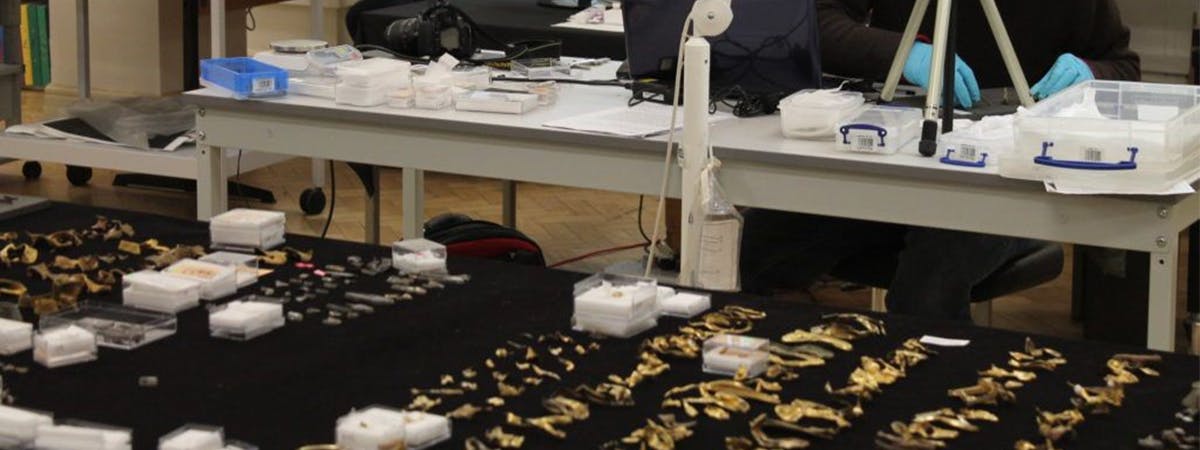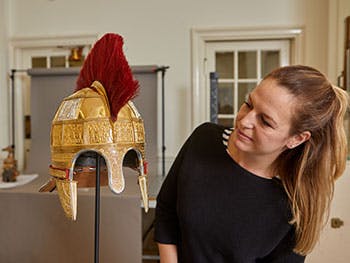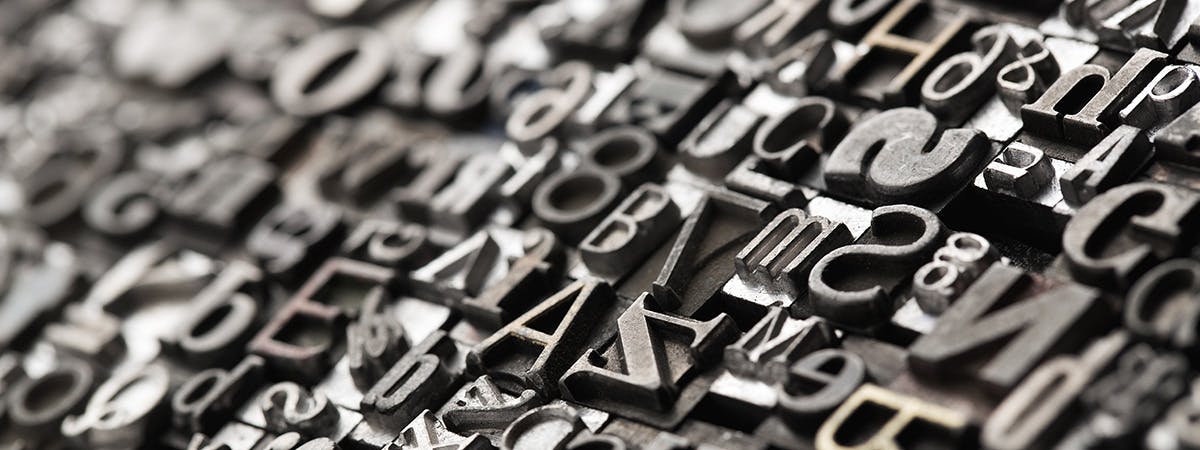Innovative research from Birmingham City University’s School of Jewellery (SoJ) has played an essential role in reconstructing historical artefacts from the Staffordshire Hoard and other finds, creating otherwise impossible opportunities for the museum sector. Implementing modern reconstruction techniques, the BCU team analysed thousands of disparate artefacts to inform a full reconstruction of the Staffordshire Hoard helmet, which is now the most iconic piece in the collection.
Research background: Recreating history for the masses
Historical artefacts allow us to connect on a cultural level and are vital to understanding where we came from. These ideas are at the heart of the museum and heritage sector, where public engagement with history is a key goal, but this aim is made difficult in practice when historical artefacts are seriously damaged by time and conflict. To meet these challenges, the SoJ has developed a leading position in reconstruction research, bridging digital technologies with traditional craft knowledge.
Work with museums and trusts include projects such as reconstructing the Staffordshire Hoard Helmet, inspired by 1500 original fragments, replicating the Cheapside Hoard to provide interactive educational experiences, and producing an unfolded replica of the Staffordshire Hoard’s Folded Cross, which was presented as a gift to Pope Benedict (2010).
Replications and reconstructions like the above offer invaluable opportunities to the sector. Museums rely on an international network of loans and shared ownership to increase public access to art and historic artefacts. This often means that fragile pieces are in constant demand, which spur fears of transportation damage and conservation.
The creation of reconstructions by Dr Carey, Frank Cooper and the team means multiple copies of a piece can be made and hosted at different venues, without the fear of damaging historically important artefacts.
Funding of £22,650.00 from Birmingham Museums Trust supported the recreation of two Staffordshire Hoard Helmets.
Research methods: Combining modern technology with traditional craft
Focusing on a combination of craft and technology, BCU’s research has utilised laser scanning techniques and craft-informed computer assisted design (CAD) visualisation to analyse and reverse engineer the original helmet fragments. This allowed the team to piece together a virtual model of the helmet, utilising advanced techniques to fill in the gaps where original pieces had been lost or damaged.

The research has also informed craftsmanship practice by allowing greater interpretation of witness marks on the original artefacts, which provide clues on how the pieces were made, as well as producing stamping tools to aid the creation of the replicas.
This work was essential in producing the two Hoard Helmets, providing a model for a team of museum professionals and craftspeople to follow throughout the reconstruction.
Outcomes and impact: New perspectives for museums and visitors
BCU’s work with reconstructions have changed the way museums think, integrate and utilise their collections, especially in their ability to engage with audiences. It also allows museums to be experimental in their display and test how the information is conveyed and understood.
The research and craft knowledge of the SoJ has helped revitalise historical artefacts of national importance. Their analysis of the artefacts and creation of a digital model was essential to the reconstruction of the Staffordshire Hoard helmet, which is now synonymous with the collection.

This work has helped the Birmingham Museum Trust and other partners tell a vital missing part of the Hoard story, which has increased visits to the collection.
The helmet reconstruction has allowed for freer movement of important Hoard artefacts. The two reconstructions have been on display since late 2018 at both Birmingham Museums Trust (BMT) and the Potteries Museum and Art Gallery, easing complexities around joint ownership and display.
The helmet itself is now an iconic representation of both the Hoard and Birmingham, having been used in Birmingham City Council branding and enabling a marketing strategy which maintains the profile of the Hoard in the public eye.
The success of this approach is also reflected in public interest; following the helmet’s unveiling at BMT, demand for educational workshops at the museum have exceeded capacity.
The application of this research within the heritage sector has been recognised in the recent Queens Anniversary Prize 2019 for ‘Innovative education for the jewellery industry and expertise in the restoration of national heritage finds.’
For more information, please read Frank Cooper's paper on Anglo-Saxon gold and silver.


